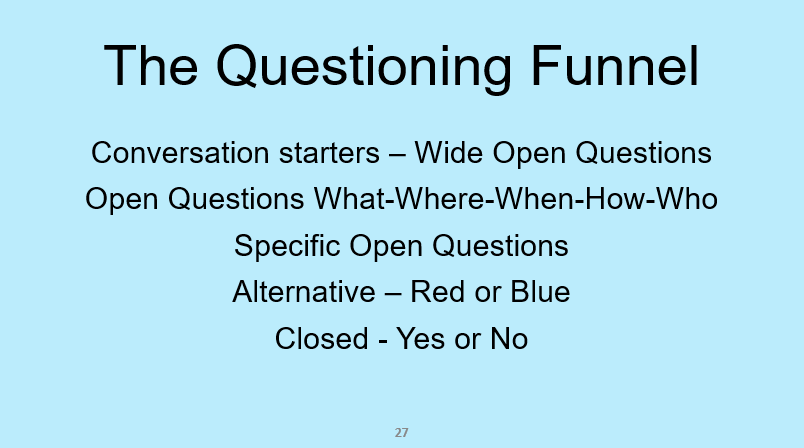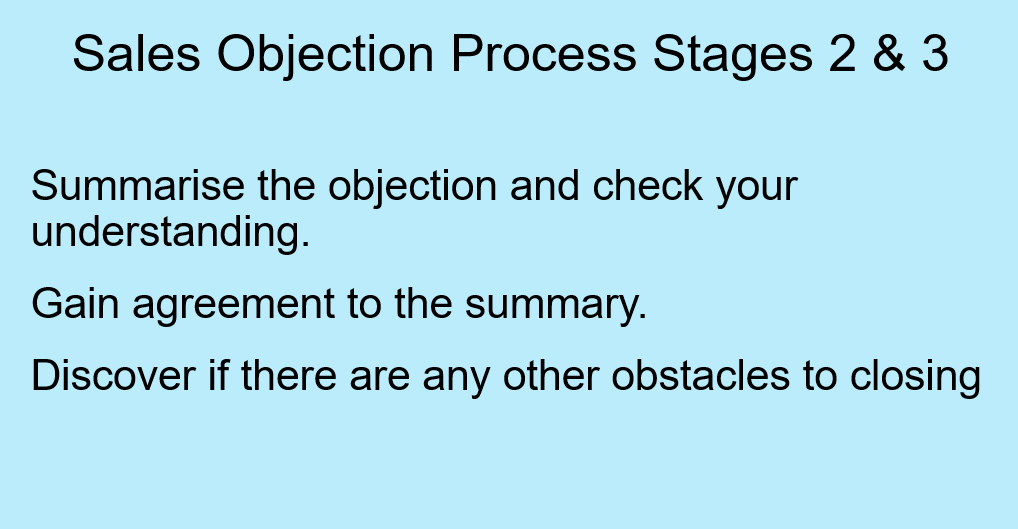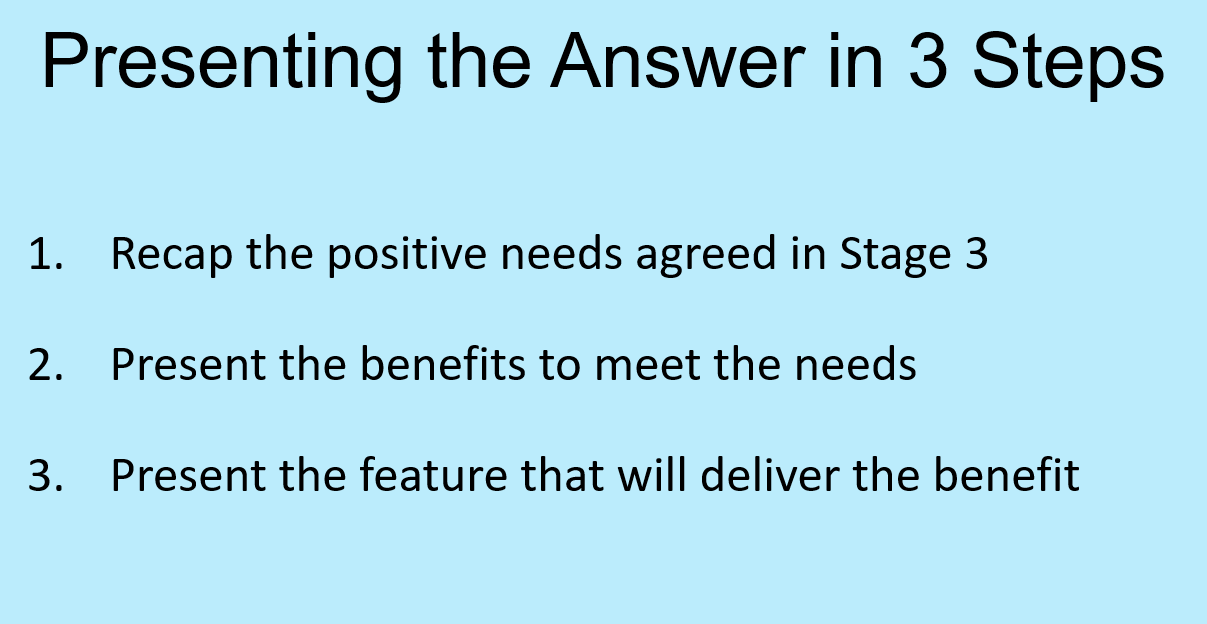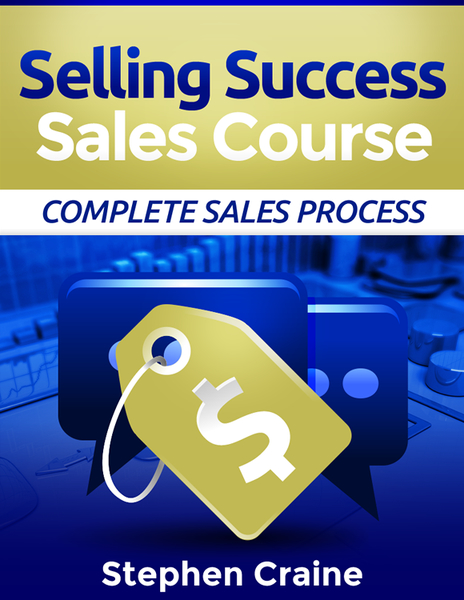Sales Objection Handling Process
A sales objection handling process with a proven success rate that you can put into action now.
I’m a working sales director and trainer. The selling skills I use with my teams have to work in real sales situations, my job and my income depend upon the results my sales teams achieve. The process you will learn here was developed and tested in real sales meetings and on live telesales calls, not just classroom role plays. Now you can use the same proven sales objection process to close more sales.
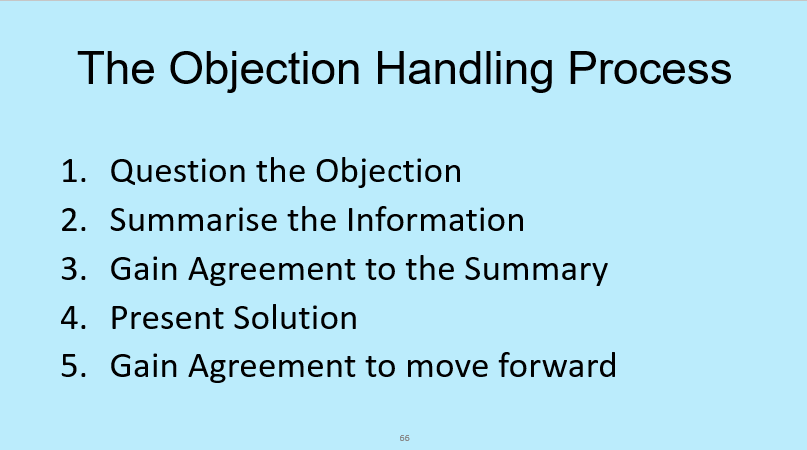 Slide from Selling Success sales training course
Slide from Selling Success sales training courseFollow this sales objection handling process to get past objections, obstacles, and concerns and close more sales.
It's a process that you can add your own words to and customise it for your marketplace and prospects.
No long, complicated techniques that don't work in real sales situations, just 5 simple stages that follow a logical process and use your existing sales skills,
You will know what to do and say at every stage and handle sales objections with confidence.
Start the process with questions to define the sales objection...
1. Question the Objection
Stage 1 of the Sales Objection Handling Process - Questioning the buyer to discover the details of the objection.
The objective is to transform the objection, obstacle, or prospect's concerns, from a negative problem into a positive need, want. or desire that you can address with the features and benefits of your product or service.
An objection the prospect presents as something your sales offer doesn't do or have, or something it has or does that they dislike, can be reframed as a desired change to your proposal that they want. This moves the problem away from being a negative about your product and places it on the prospect as something they want, and if you can deliver what they want they will buy from you.
Example
A price that is higher than the value the prospect places on your product is a typical negative that is presented as an objection of: It's too expensive.
By questioning the sales objection you can get to the root cause and clearly define it, then move the objection away from the product and on to the buyer. Rather than your product being too expensive, your questions discover that the buyer doesn't have the budget, they haven't seen the value of the benefits the product offers, or they have outdated information on the price of similar solutions. You have now defined the prospects needs, wants or desires and the benefits you need to convince them you can provide.
When you define and reframe the objection you will be able to address it with an action, a feature and a benefit, or changes to the solution or proposal you have presented that caused the objection to be raised.
There is so much more you can add to your sales conversations to make this stage of the process more effective. Get your sales objection handling process off to a great start by viewing the full page on Questioning the Objection
Once you have questioned, defined and reframed the objection you should check you understand it...
2. Summarise the Objection
When you have questioned the objection, discovered the cause, and defined it so you know what positive action will overcome it, you should summarise your understanding of the objection back to the prospect. This is Stage 2 of the objection handling process.
There are 2 reasons to summarise:
1. Checking your understanding
You summarise back to the prospect what you have understood is their sales objection, their concern, need you are not meeting, or other reason for not moving forward with you towards the close of the sale. You want to check your understanding is correct.
2. Turn the objection into needs
When you summarise back your understanding of the objection you can reframe it from a negative view of the sales proposal or product, into the positive requirements required to get past it. This is an important step in the sales objection handling process as it sets up the presentation of a solution, answer, or new proposal that you will give. Learn more about this sales objection technique at: Objection Responses
Before you give that presentation, there is one more small but important step...
3. Gain Agreement to the Summary
Stage 3 - It's a quick and easy action, but if you don't do it you can give a great presentation of a solution that addresses the wrong sales objection.
You use a simple question asking if the summary of your understanding of the sales objection was accurate. If the prospect responds positively you can move to the Presentation Stage of the sales objection handling process. If your the objection wasn't summarised accurately, move bask to the questioning Stage and start defining the objection again.
Another good question to ask when handling objections: Is this the only thing stopping the prospect going ahead.
In your own words, you want to know if there are any other objections or concerns that would stop the sale closing. If there are, go back to the Questioning Stage and take the newly discovered sales objections through the same process. Learn how to respond to sales objections by summarising and gaining agreement by visiting: Sales Objection Responses
When you have agreement that you understand all sales objections and that there are no other obstacles to the sale moving forward, you can present your response...
4. Present the Solution
You've defined the objection, and followed the sales objection handling process as you summarised your understanding of the objection. You gained the important agreement to the summary and to there being no other obstacles to the sale going ahead.
Now, you present your solution, new proposal, or additional information to answer the objection and get the prospect moving forward to the close.
Here you use the same presentation skills you used during the sales process, but the presentation itself will be customised to suit the type of sales objection you are responding to.
Start using this simple 3 step presentation process when handling sales objections at: Presenting the Answer
Once you have given your response, agreement to your presentation should close the sale...
5. Gain Agreement to Moving Forward - Close the Sale
Sales objections can occur at any stage of the sales process on both telesales calls and in face to face meetings. You can get objections in the Introduction Stage of a sale, when questioning to discover needs, or while gaining agreement to your sales Presentation or closing the sale afterwards.
If the sales objection comes up in an early sales stage the agreement gaining at stage 5 of the objection process is aimed at getting the prospect to agree to move forward to the next stage of the sales process.
If the objection arises as you asked for agreement to your presentation of a proposal or as you tried to close the sale, by gaining agreement and overcoming the objection you should also be gaining agreement to an order.
See suggestions and examples on how to gain agreement to the objection solution you have presented in stage 4 by visiting the page on stage 5: Gaining agreement to move forward
Learn More About the Sales Objection Handling Process
The sales objection handling process is included in the sales training course Selling Success.
The course takes you step by step through the stages of the sale and gives you proven training on overcoming sales objections. Selling Success includes:
- The mindset to overcome objections.
- Common objections and why they happen.
- Types of objections: smoke screen, real objections, conditional objections.
- In depth sales training on the sales objection handling process and how to use it,
The course is the one I have used to train sales teams for corporate organisations and small businesses throughout my career of 25 years in sales. It's already proven successful so it will work for you. See more information by tapping the image or go to: Selling Success
- Homepage
- Sales Objections
- Sales Objection Handling Process
The Sales Buzz - Newsletter Ezine
The weekly Sales Buzz eZine newsletter covers all aspects of sales with a different tip, technique, or discussion point each week.
See the latest pages to be added or updates on the Proven Sales Training website, real examples from the world of sales, and interesting innovations that sales people and businesses are using.
When you ask for the Sales Buzz to be delivered you get 2 free sales training mini-courses that are unique to this website, and we have a strict privacy policy so you know your details are kept safe.
See the 2 free mini-courses and get the Sales Buzz delivered by visiting: The Sales Buzz
